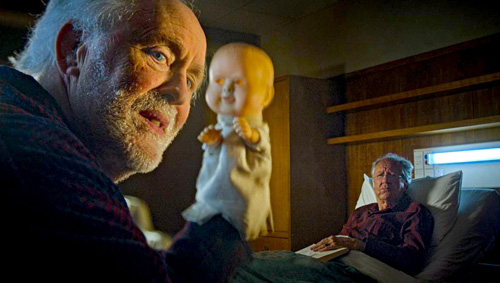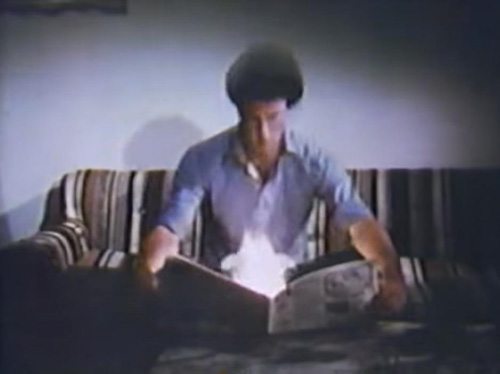
If Devils Stay has the nerve to call itself a possession picture, why does the title lack a possessive apostrophe? Ba-dum-tss!
That joke is to prove to my English teachers I paid attention. Devils Stay, however? No laughing matter.
Schoolgirl So-mi (Lee Re, Train to Busan Presents: Peninsula) dies of cardiac arrest shortly after a heart transplant. Her father (Park Shin-yang, The Big Swindle) takes the tragedy hardest of all, because he’s also the surgeon responsible for her procedure.
Looking back, Dr. Cha notes his beloved daughter did act strangely after getting her ticker swapped out. What’s more, he believes his little girl is still alive. Say, you don’t think that secondhand heart could have something to do with it, do you?
Of course! We’ve all seen Body Parts.

A young priest (Lee Min-ki, 2009’s Tidal Wave) explains it all: So-mi is possessed by a demon who will rise again in three days, using her fresh corpse as a vessel. As Dr. Cha and his family grieve, So-mi’s “guest” kills some people and an oversized moth crawls from the girl’s cakehole. This is either the first feature for TV director Hyun Moon-seop (Nightmare Teacher) or the weirdest episode of ER ever.
Soused in South Korean customs and universal superstition, Devils Stay earns points for finding a new angle into the exorcism subgenre. The movie may not exist without The Exorcist, but minus one short scene, it’s not ripping off The Exorcist. One could argue the strangest element is its front-and-center embrace of Catholicism since Asian films usually default to Buddhism.
On one hand, Hyun cues up rote scares, accompanied by suddenly loud music stings as if he distrusts his own abilities. And he has abilities, because on that other hand, Devils Stay displays some arresting, imaginative visuals — none more potent than So-mi’s body hovering outside in mid-air. Still, with a drawn-out denouement, Hyun’s theatrical lacks the trickery to ascend to next-level special where recent Korean spookers Sleep and Exhuma reside. Maybe next time? —Rod Lott











